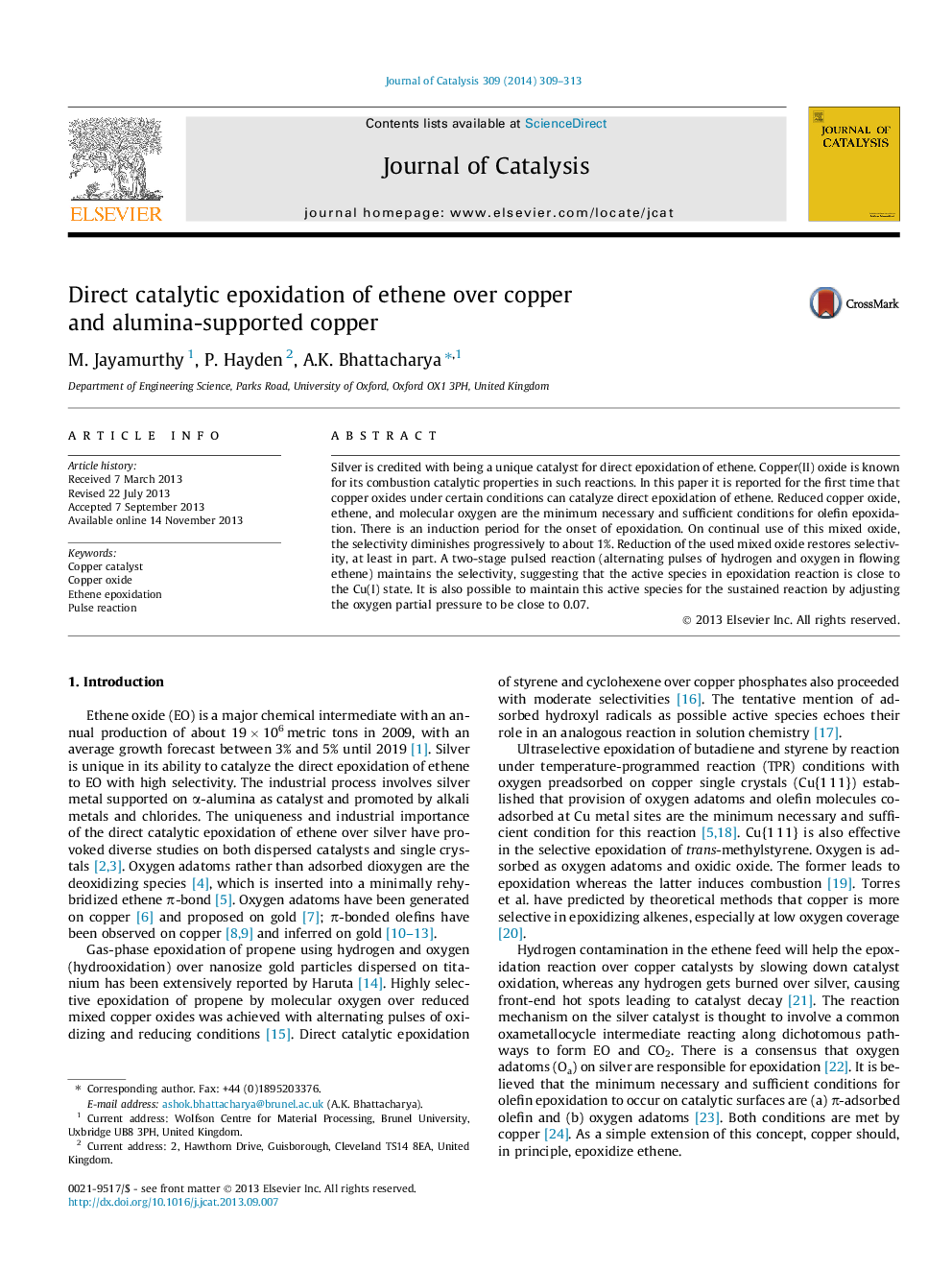| Article ID | Journal | Published Year | Pages | File Type |
|---|---|---|---|---|
| 61121 | Journal of Catalysis | 2014 | 5 Pages |
•Epoxidation is achieved by Cu and supported Cu catalysts.•There is an optimum oxidation state for Cu capable of ethylene epoxidation.•Oxygen partial pressure plays a critical role in epoxidation reaction.•Sustained epoxidation depends on stabilizing the active Cu state.
Silver is credited with being a unique catalyst for direct epoxidation of ethene. Copper(II) oxide is known for its combustion catalytic properties in such reactions. In this paper it is reported for the first time that copper oxides under certain conditions can catalyze direct epoxidation of ethene. Reduced copper oxide, ethene, and molecular oxygen are the minimum necessary and sufficient conditions for olefin epoxidation. There is an induction period for the onset of epoxidation. On continual use of this mixed oxide, the selectivity diminishes progressively to about 1%. Reduction of the used mixed oxide restores selectivity, at least in part. A two-stage pulsed reaction (alternating pulses of hydrogen and oxygen in flowing ethene) maintains the selectivity, suggesting that the active species in epoxidation reaction is close to the Cu(I) state. It is also possible to maintain this active species for the sustained reaction by adjusting the oxygen partial pressure to be close to 0.07.
Graphical abstractFigure optionsDownload full-size imageDownload high-quality image (40 K)Download as PowerPoint slide
